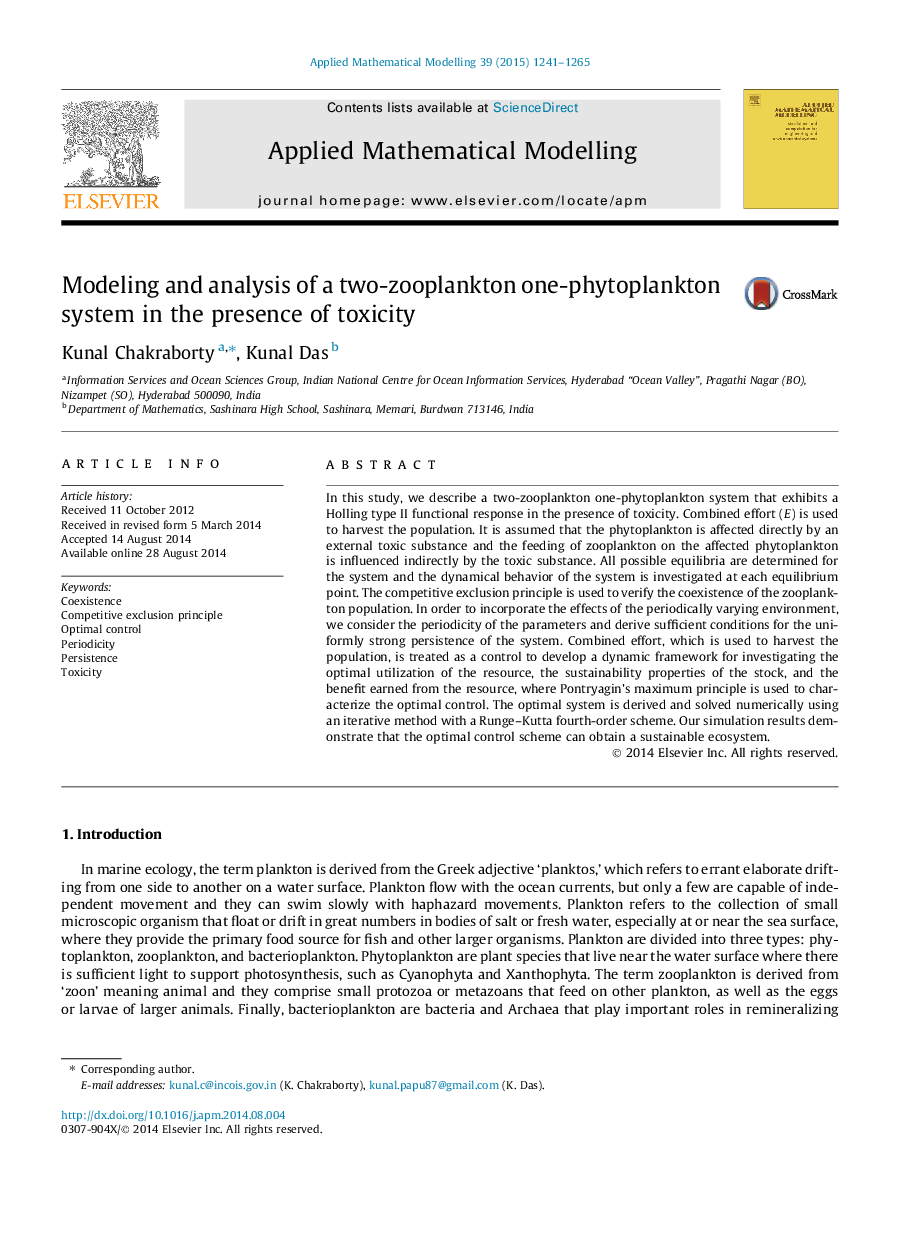| Article ID | Journal | Published Year | Pages | File Type |
|---|---|---|---|---|
| 8052616 | Applied Mathematical Modelling | 2015 | 25 Pages |
Abstract
In this study, we describe a two-zooplankton one-phytoplankton system that exhibits a Holling type II functional response in the presence of toxicity. Combined effort (E) is used to harvest the population. It is assumed that the phytoplankton is affected directly by an external toxic substance and the feeding of zooplankton on the affected phytoplankton is influenced indirectly by the toxic substance. All possible equilibria are determined for the system and the dynamical behavior of the system is investigated at each equilibrium point. The competitive exclusion principle is used to verify the coexistence of the zooplankton population. In order to incorporate the effects of the periodically varying environment, we consider the periodicity of the parameters and derive sufficient conditions for the uniformly strong persistence of the system. Combined effort, which is used to harvest the population, is treated as a control to develop a dynamic framework for investigating the optimal utilization of the resource, the sustainability properties of the stock, and the benefit earned from the resource, where Pontryagin's maximum principle is used to characterize the optimal control. The optimal system is derived and solved numerically using an iterative method with a Runge-Kutta fourth-order scheme. Our simulation results demonstrate that the optimal control scheme can obtain a sustainable ecosystem.
Related Topics
Physical Sciences and Engineering
Engineering
Computational Mechanics
Authors
Kunal Chakraborty, Kunal Das,
